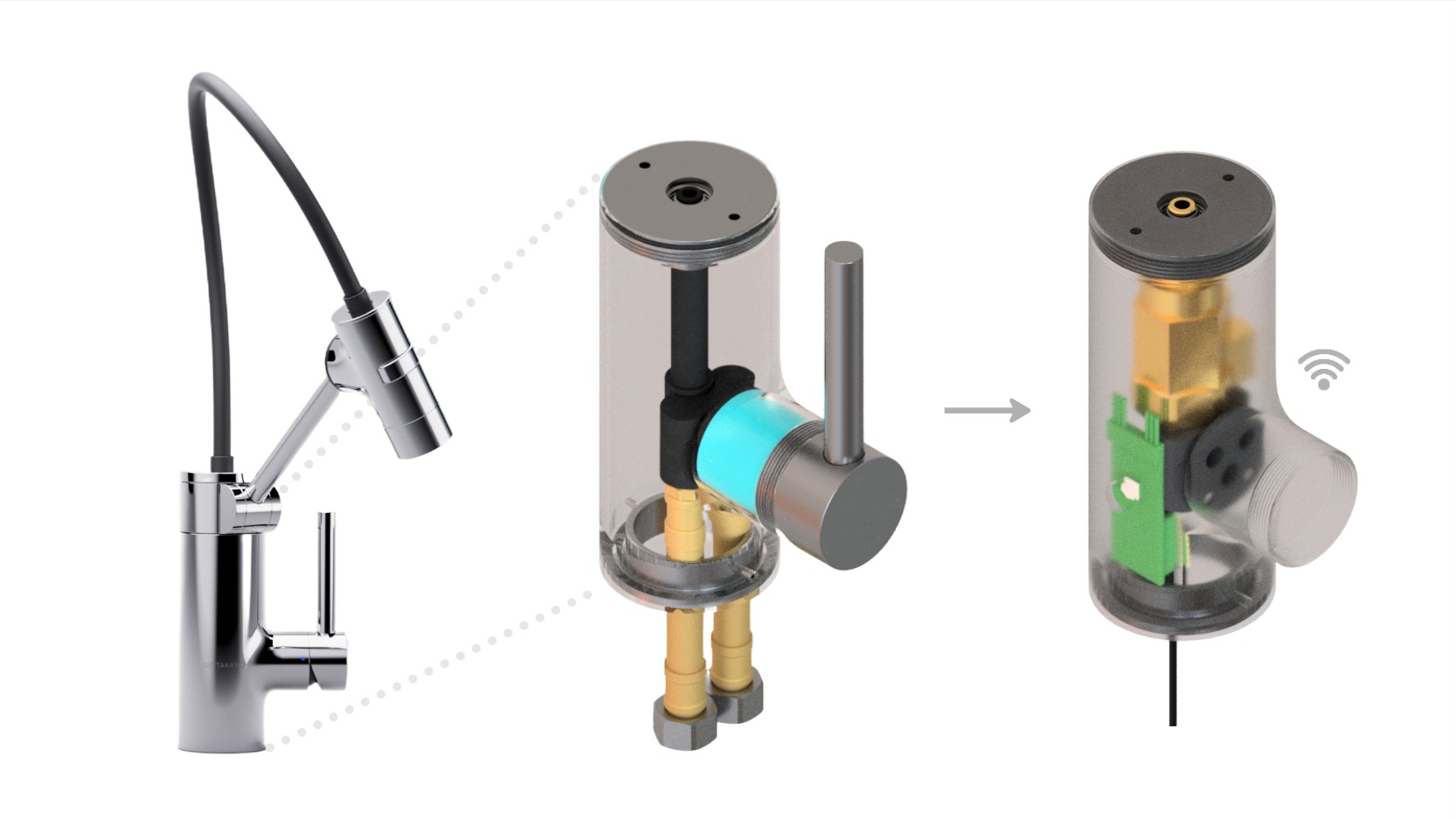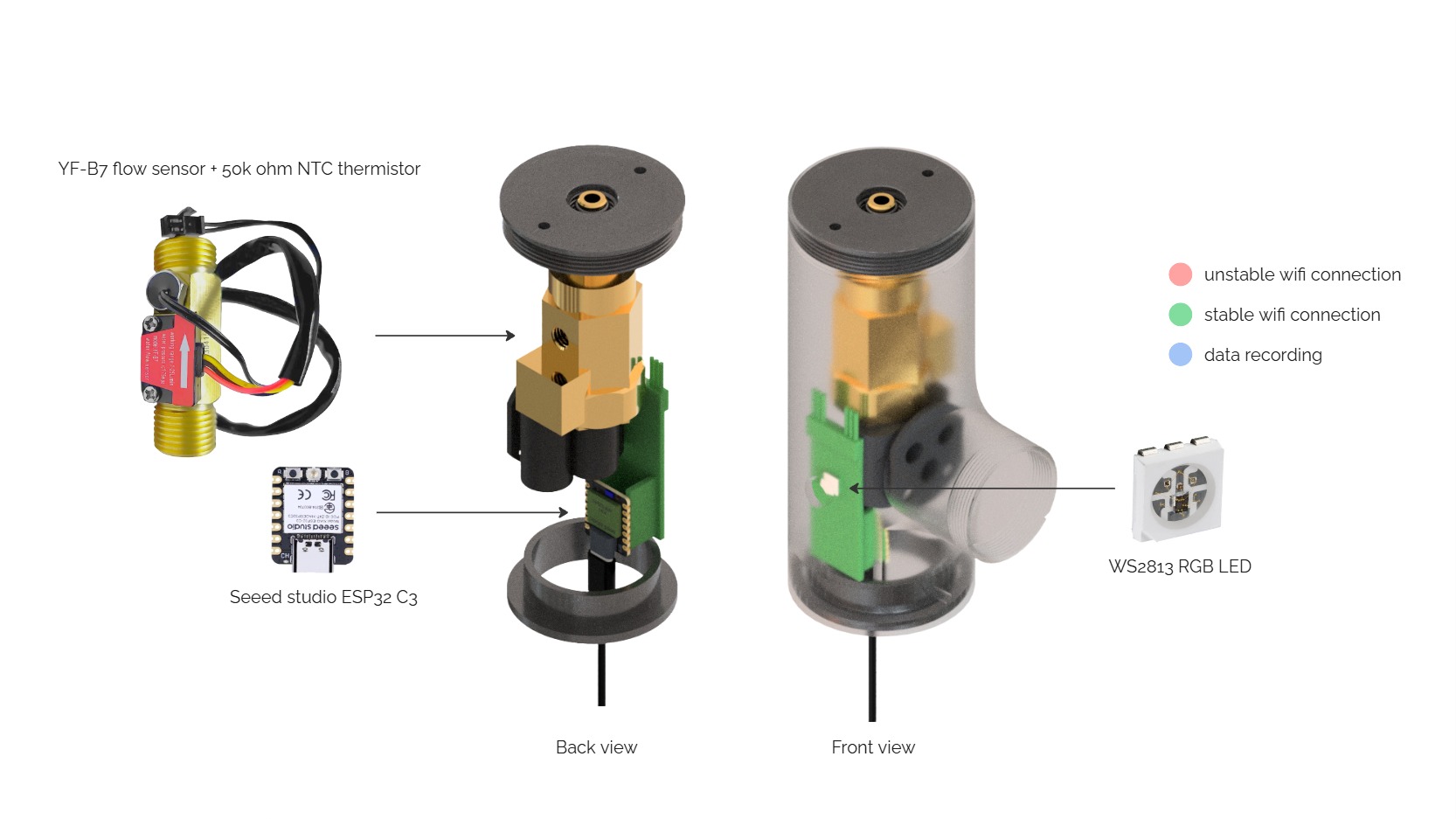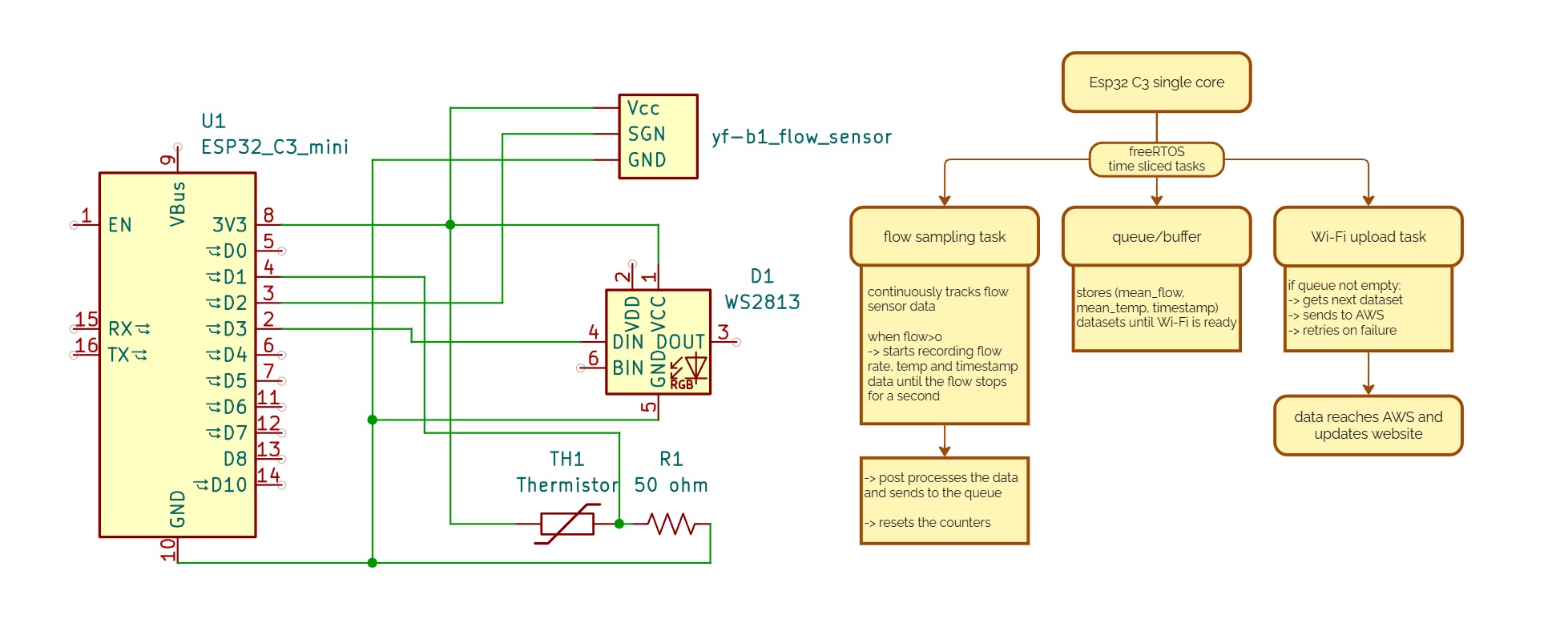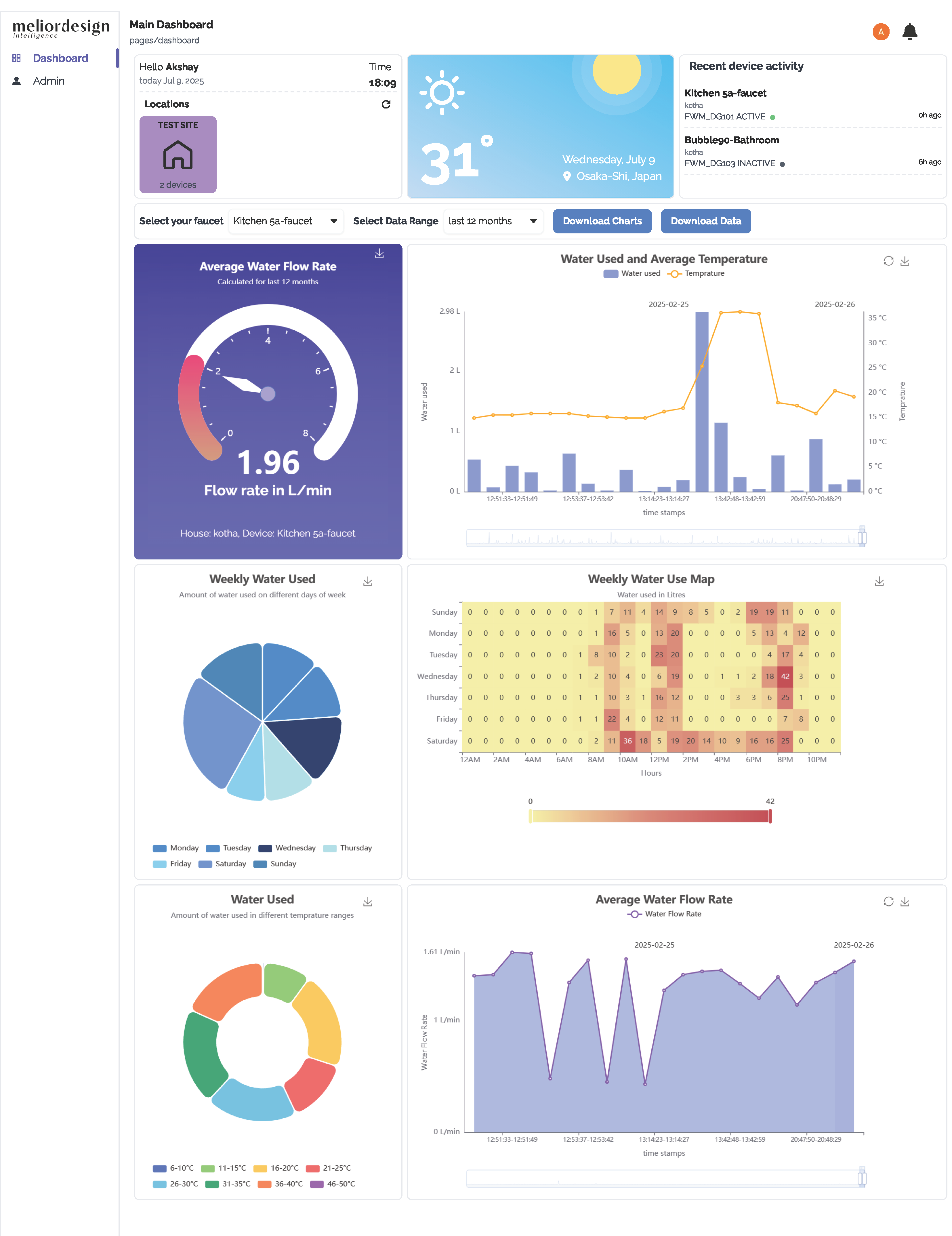System Kitchen: Real-Time IoT Tracking of Water Use

I led a small engineering team in the mechanical development of an IoT-integrated kitchen faucet, focusing on delivering a reliable and scalable solution. This included designing and embedding flow and temperature sensors directly into a custom faucet body, with careful consideration for manufacturability and cost efficiency.

A conventional faucet body was transformed into a smart system by integrating a flow sensor to monitor water usage, a thermistor for precise temperature measurement, and an LED indicator to provide intuitive feedback. The LED glows red to indicate connection issues, green for a stable Wi-Fi link, and blue when data recording is in progress.

The above diagram illustrates the schematic and core logic of the system. It employs pseudo-parallelism through concurrency, enabling the ESP32-C3 to record sensor data and transmit it over Wi-Fi simultaneously without blocking other operations. By leveraging FreeRTOS, the system efficiently manages independent tasks—such as data acquisition and Wi-Fi communication—so that each runs without interrupting the other. A queue mechanism ensures that data is reliably buffered before transmission, safeguarding against potential losses during temporary network disruptions. In scenarios of prolonged poor Wi-Fi connectivity where the queue reaches its memory limit, the system prioritizes new data by overwriting the oldest entries, maintaining up-to-date records. Additionally, an integrated LED indicator provides real-time feedback, alerting the user to network issues by signaling when connectivity problems arise.

Users can easily access their data by logging into their account on the K-Smart website. The information is presented in a clean, minimalistic layout that makes it simple to review and understand.
Future scope
The system can be further optimized by eliminating the external USB power source. By integrating a low-power nRF5340 microcontroller, a 3.7 V lithium battery, and a micro-hydro generator, the setup can sustain itself by harvesting energy directly from water flow, continually charging the battery during operation. This would enable a fully autonomous, self-powered solution with significantly reduced energy requirements.